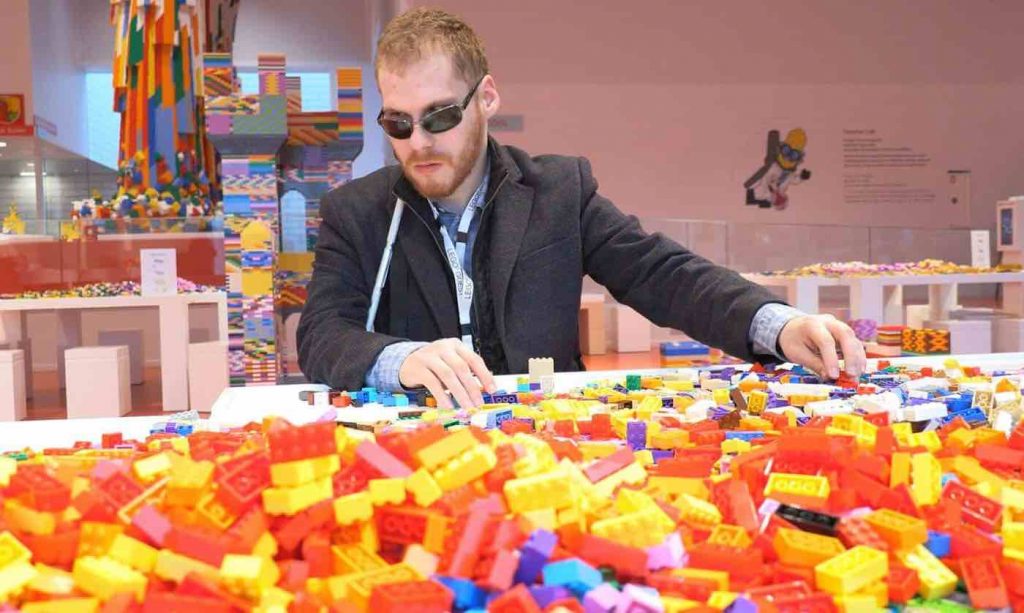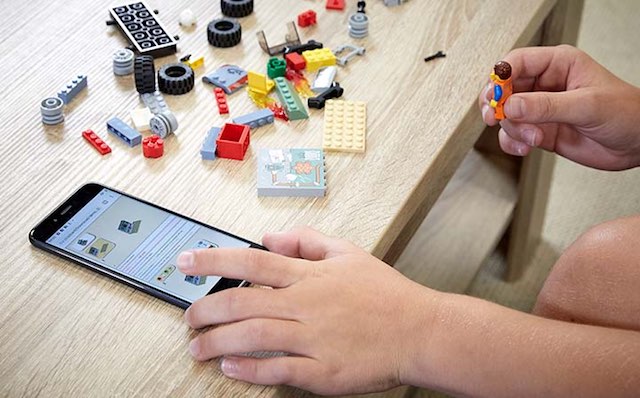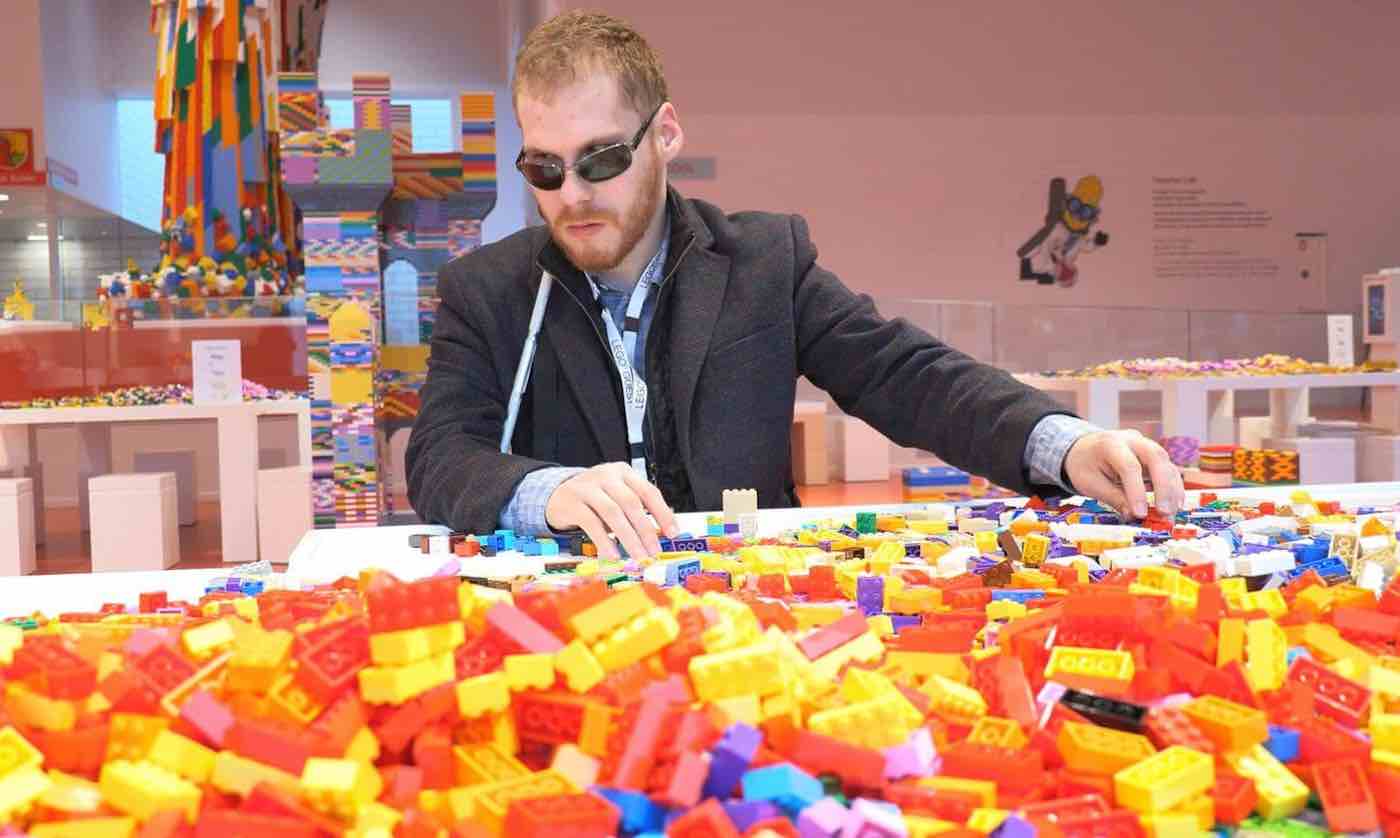What started as a kind gesture between two friends is now being rolled out as a global pilot program that will allow thousands of blind children to build LEGO sets all on their own.
Using AI technology, the LEGO Group is aiming to make their play experience more accessible for those with vision impairment by converting their instruction manuals into an audio and braille formatting.
The idea came from Matthew Shifrin, a 22-year-old man from Boston who was born blind. As a child, he developed a strong passion for LEGO play. However, he always needed assistance when it came to specific LEGO-building instructions.
“I had a friend [and babysitter named Lilya] who would write down all the building steps for me so that I could upload them into a system that allowed me to read the building steps on a braille reader through my fingers,” says Shifrin. “She learned braille to engage with me and support my LEGO passion, and then spent countless hours translating LEGO instructions into braille.”
Shifrin would then pore over his customized instructions to create models such as the LEGO Sydney Opera House and London Tower Bridge—the latter of which required over 850 pages.
But for the first time ever, he is able to build LEGO sets independently, without needing anyone else guiding him through the instructions.
“This is extremely important for blind children because there aren’t a lot of places where we can say, ‘Look Mom and Dad! I built this on my own… I did this’” says Shifrin. “For blind children, we don’t have access to what sighted kids are used to. LEGO bricks enable us to learn about our environment, to see the world. It is so important because blind kids get left out of a lot of social stuff, especially in elementary school. But LEGO building is one of the things we can do.”
CHECK OUT: LEGO Bricks on Sale Now Are Plant-based Instead of Plastic

For years, Lilya and Shifrin spent hours working together to translate different LEGO manuals and decided to publish them to a website, “LEGO for the Blind”, so they could share their work with other children. To date, their website has published the braille and audio instructions for about 40 different sets—but they had bigger dreams.
When Lilya passed away in 2017, Shifrin was determined to honor her memory by ensuring others benefitted from her idea of creating and sharing the instruction manuals. Thanks to one of his friends at MIT, he was finally introduced to those who run the Creative Play Lab at the LEGO Group.
The team took his idea to the Austrian Research Institute for Artificial Intelligence who developed new AI software to translate LXFML data (LEGO Exchange Format Mel Script) from the visual digital building instructions to text-based descriptions for braille and voice commanded instructions. Speech synthesis company, CereProc then provided the Software Development Kit and a voice that reads the instructions.

The free service is now available in English through their accessible new LEGO Audio Instructions website. The first four instructions to be launched include a set from LEGO Classic, LEGO CITY, LEGO Friends, and LEGO Movie 2.
Visitors can either choose to hear audio instructions using their screen reader or with audio provided by the LEGO Group. Alternatively, users can also choose to read the instructions using a Braille reader. Depending on consumer feedback on the four pilot instructions, which will be collected until the end of 2019, the company plans on launching more audio and braille instructions during the first half of 2020.
The innovation is being hailed as a welcomed follow-up to the launch of LEGO Braille Bricks, launched four months ago to help teach braille to young children with vision impairment in a playful way. Co-developed with the LEGO Group, both projects have been funded by the LEGO Foundation.
CHECK OUT: Blind Man Develops Smart Cane That Uses Google Maps and Sensors to Identify One’s Surroundings
“As I build a set, I develop a better sense of what a building looks like and how it is laid out and constructed,” says Shifrin. “For blind people LEGO sets act as miniature 3D substitutes for real-life buildings in lieu of two-dimensional photographs. LEGO bricks allow me to see things that are impossible to explore by touch, such as the arches of a Middle Eastern palace or the towers of the London Tower Bridge.
“I would like to get my instructions out to the blind community so they can feel on par with a sighted builder. I want every blind person to feel that the once impossible is now possible; that he or she can now build a miniature LEGO world.”
(WATCH the video below)
Build Up Some Positivity By Sharing The Good News To Social Media…




















